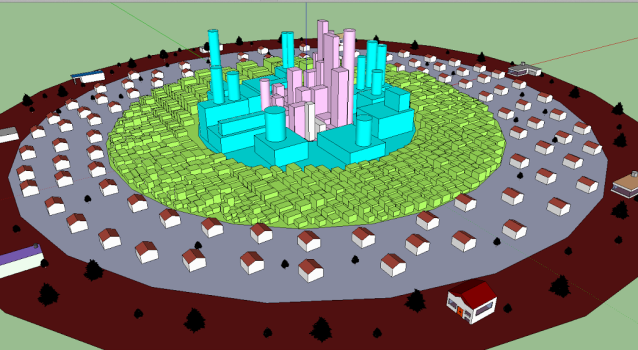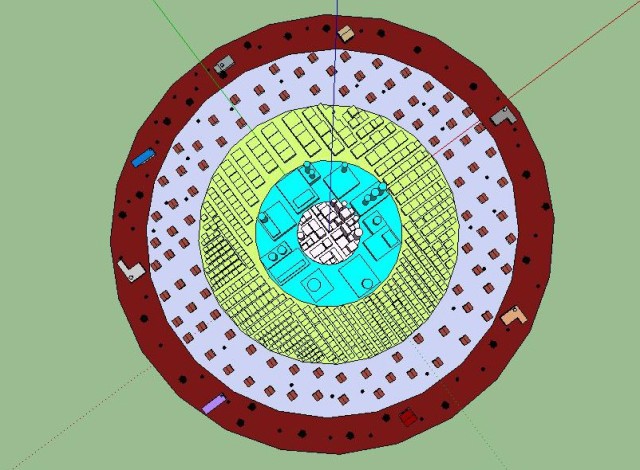Places with different land use, people, and business industries have distinct urban social structures. Geographers have fundamentally developed five different models of urban structures, the concentric zone model, the sector model, the multiple nucleic model, the galactic city model, and the urban realm model. In this blog post, I am going to describe and explain the land use, characteristics, and history of the concentric zone model.
Since the concentric zone model was created by sociologist Ernest Burgess, the model can also be called the Burgess model. The model was created in 1923, it is based off the city San Francisco in the United States during the 1920s and was applied to Chicago. It is the earliest created analytical social structures, and it is also said that it is one of the simplest, as you can see in the picture below. There is also a link to the goggle sketch up file of the model.
link: Burgess Concentric circle Model Google Sketchup Pro File
I am going to explain the usage of land in different zones of the model. Starting from the center, which is the pink zone, is the CBD; the central business district. People come to the center for business and trade, and transportation is efficient due to most people being able to afford street cars. The blue zone is the residential zone, is the zone where all the factories are. The green zone is the working class zone, this zone has high density and the people living there have mostly low income, it can also be called inner suburbs .
The grey zone is the residential zone, basically the outer suburbs with middle class people. The people in this area have a high socioeconomic status, so most people have the money to afford bigger and better quality homes that have better housing. The most outer layer is the commuter zone, this is where the wealthiest people live, since they have extremely high income, they can afford huge houses and land, and,since they can afford efficient transportation like street cars, they live farthest away from the CBO and the factories.
Urbanization is the growth of urban land, when a place is becoming more like a city and population is growing. Even though people argue that the concentric model is too simple and inefficient, the concentric model is useful of explaining the urbanization in cities in America in the 20th century.


